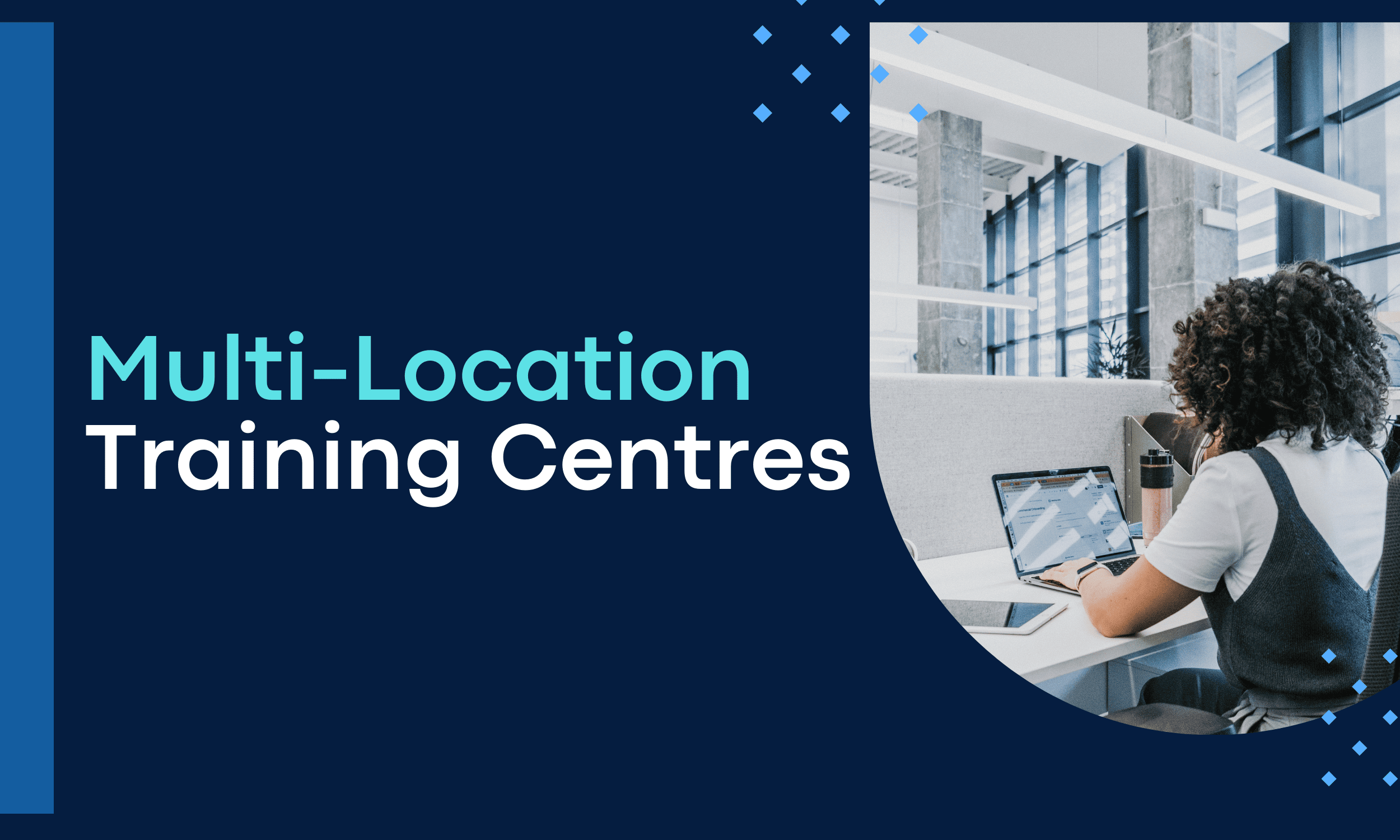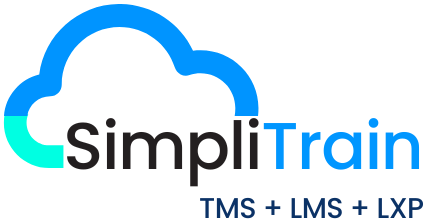
The global training landscape runs as an interconnected web, supported by technology, and focuses on continuous skill enhancement. In a large yet linked ecosystem, consistent training becomes a priority. Multi-location training centers hence can be considered pivotal for equipping individuals with skills demanded by today’s global interconnected economy.
Multi-location training centers are closely linked with Scalability. Scalability by definition is the ability to increase or decrease based on the requirement. Whenever training centers grow or expand geographically, there rises a demand to accommodate more trainees and trainers. Scalability ensures that training centers can handle any unexpected increase in enrolment without compromising the quality. It is therefore essential to have scalable systems that can adapt to fluctuations in demand, either seasonal or due to business growth. In multi-location training centers scaling resources up or down should be flexible to prevent overprovisioning or underutilization, while optimizing costs. This is where adaptive systems like Training Management Systems come to the fore.
So how can training centers strategize to scale without impacting the workflow or quality? This article covers how Multi-Location Training Centers work, the major training challenges that dispersed geographical locations pose, and how robust a training management system can streamline the process across multiple locations.
It all begins with a fundamental question. What causes a disconnect in training at different locations? It is a question that contradicts the popular views of distance learning and online training. Yet, the most basic question that multi-location training centers often tend to ask. Effective global training programs are usually impacted by challenges like language barriers, cultural differences, and time zone variations, the intricacies that learning leaders must address to improve training outcomes.
Understanding the Landscape of Multi-Location Training Centers
As we delve deeper into that one question one must understand what Multi-Location Training Centers are and how it works. Multi-Location Training Centers are educational institutions or corporate training programs that run operations across multiple geographical locations. The primary purpose of such centers is to provide consistent and effective training to learners or employees spread across different locations. Sounds simple right?
Successful management of multi-location training centers depends on focusing on the primary aspects at each location, an interconnected model replicated across multiple locations. It involves coordinating multiple learners and overseeing and managing batches of training operations across various locations maintaining consistent quality and standards of training content and delivery methods across all locations. For this, ensuring the efficient administration of training programs, including scheduling, registration, attendance tracking, and performance monitoring across multiple sites is pivotal. These are all complex intensive tasks, considering the data volumes and processing involved. For training centers with high enrolment rates and globally scattered locations, the Training Management system is an amazing collaborative technology to stay on par with the learning trends.
With modern learners leaning towards learning experience, experiential and immersive learning, and artificial intelligence, training solutions must be apt and flexible. The primary role of training solutions here is to deliver training that meets the learning standards. Various factors are pushing the need for scalable training solutions. Here are some key trends.
# Decentralization of L&D: With Multi-location training centers, subject matter experts across different locations create their training content independently. This in turn gives rise to the need for a scalable platform to manage this decentralized content creation.
# Personalization and Localization: When we talk about different locations it also accounts for the growth of employee needs based on diverse roles, functions, and groups. This translates to tailoring training to those audiences.
# Measuring Outcomes: Scaling is directly proportional to measurable outcomes. With talks about immersive learning and experiential learning, there is a growing demand for training solutions that can provide analytics on who is using the training, how often, and for how long, along with sentiment analysis on how learners felt about it.
For multi-location training centers, the shift is from that of a sole content producer to a content creation hub. It needs to be supported by scalable training platforms with version managers, translation, localization features, to easily add, track, and update multiple versions of learning content for different audiences and provide tools for efficient decentralized learning.
Key Challenges in Managing Multi-Location Training Centers
Before looking at scalable training platforms, it is imperative to comprehend the primary challenges that multi-location training centers face when learning is confined to a classroom setting. Delivering the same quality of training to all learners at various locations is one of the primary issues that multi-location training centers have to handle. Providing access to training and aiding real-time collaboration can also be pretty challenging.
The common challenges that multi-location training centers face are geographical dispersion, maintaining consistency, and technology integration. It can be broadly categorized as operational complexities, Standardization vs. customization, and technology integration.
1. Operational complexities and logistical challenges often arise when managing training centers across multiple locations. Some of the issues here include:
- staying in touch with employees across locations
- ensuring consistent training across locations
- maintaining communication and collaboration
- monitoring performance and gathering feedback
- and investing in the right technology.
2. Standardization vs. customization: Balancing consistency and local relevance. This debate focuses more on the training content and delivery while balancing local relevance and consistency.
Standardization guarantees uniformity, quality, and compliance across all training locations. Customization enables training content and delivery to be catered to the unique requirements and preferences of each training location’s learners. The challenge lies in balancing relevance and engagement and reproducing it at scale. And so is developing a standardized curriculum and examinations.
Balancing Consistency and Local Relevance requires an understanding of standardization and customization. The balance needs to be maintained in all aspects of training.
Here are a few instances of Standardization vs. customization in balancing consistency and local relevance.
I. Developing a training program that covers the essential knowledge and skills, to ensure a baseline of consistent quality and compliance across all locations.
Here standardizing the core curriculum, training materials, and delivery methods is crucial for:
- maintaining consistent learning outcomes and competency levels across all locations
- simplifying training administration, tracking, and performance measurement
- and promoting collaboration and knowledge-sharing between locations.
Customization on the other hand becomes necessary to address location-specific requirements, like:
- including examples, case studies, and scenarios to match the local context
- incorporating local regulations, policies, and procedures
- accounting for differences in learner demographics, roles, and skill levels
- fostering engagement and relevance for learners.
II. Identifying unique training requirements for every site based on positions, backgrounds, and learning preferences, and offering additional training to meet these demands.
Training may become impersonal or disconnected from the circumstances at each site if standardization is the only focus. This may have a disadvantageous effect on application at work, retention of knowledge, and engagement.
Here, customization makes training more applicable, engaging, and applicable to the particular requirements of each audience. This may entail:
- gathering input from the community to modify the content and delivery
- allowing regional instructors to modify course materials as necessary
- and providing additional or optional training for positions that require specific knowledge.
III. Enabling Efficient Scaling and Centralized Management
- Training programs can be scaled more efficiently across multiple locations with standardization. It allows for centralized development, deployment, and tracking of training initiatives.
Excessive customization here can make it difficult to manage training centrally, as each location may require unique content, resources, and administrative processes. This would mean:
- increased costs and complexity in training development and delivery
- challenges in maintaining version control and ensuring updates are applied consistently
- and difficulties in aggregating performance data and benchmarking across locations.
IV. Finding the right balance between Compliance and Flexibility
Some industries have strict regulatory or compliance requirements that mandate a high degree of standardization in training. This would mean that all locations must adhere to the same policies, procedures, and quality standards.
At the same time, local market conditions, cultural norms, and business needs may necessitate some level of customization to remain competitive and responsive. The challenge here lies in finding ways to:
- satisfy compliance requirements through a standardized core curriculum
- introduce customized supplementary training to address local needs
- and maintain visibility and control over all training activities across locations.
Multi-location training centers also encounter trouble when it comes to involving Stakeholders and Learners, collaborating with local managers, trainers, and employees to understand their needs, and incorporating their feedback to strike the right balance of standardization and customization. The trick however lies in finding the right balance between standardization and customization to maintain consistency while still meeting the diverse needs of learners across locations.
3. Technology integration and infrastructure requirements, the envelop term for the key technology and infrastructure challenges. It includes establishing reliable connectivity, securing distributed systems, integrating new tools with legacy infrastructure, and enabling consistent, accessible training delivery across distributed locations.
Networking and Connectivity Challenges are often the result of:
- differences in regional networking standards and infrastructure capabilities between locations
- issues in ensuring secure and low-latency connectivity, especially for remote/distributed locations
- and demand for scaling network capacity to accommodate growing training and user needs.
The technology challenges also include Cybersecurity and Data Protection risks, often amplified in a multi-location environment due to the distributed nature of the infrastructure and workforce. Key challenges include:
- safeguarding remote access points and data across multiple locations
- addressing varied security requirements and regulations across different regions
- and maintaining visibility and control over security across the distributed network.
Modernizing and upgrading IT infrastructure to support training across multiple locations requires integrating new technologies with legacy systems. Integrating New Technologies with Existing Systems is another technology challenge. It can be complex and time-consuming and involves:
- aligning technologies with different regional standards and regulations
- efficiently managing expenses and resources fragmented across locations
- and overcoming logistical challenges in coordinating technology deployments.
Multi-location also means delivering a seamless and consistent training experience for learners across the globe. Enabling Consistent and Accessible Training Delivery requires the right technology infrastructure. This would mean:
- deploying video conferencing, virtual classrooms, and collaboration tools
- implementing e-learning platforms and mobile learning apps for on-demand access
- and leveraging immersive technologies like AR/VR for hands-on, interactive training.
Having discussed the challenges, it is now time to understand how a Training Management System (TMS) can assist in efficiently managing training centers across multiple locations.
Introducing SimpliTrain’s Multi-Location Feature
Overcoming the various challenges that impact the smooth operation of multi-location training centers requires a strategic approach and external expertise. SimpliTrain is a powerful unified system that goes beyond traditional LMS to help support training employees across multiple locations with features like Centralized Course Management, Flexible Learning Delivery, Personalized Learning Paths, Performance Tracking and Analytics, and more.
SimpliTrain offers a multi-location feature specifically tailored for training centers to streamline course and resource management across various locations. This feature enables the creation and management of multiple centers with a centralized database and facilitates tracking of inventory levels, course schedules, and resources across all training sites.
Additionally, it enables location-based course scheduling, making it simple to schedule courses at the most suitable locations based on facility availability, instructor schedules, and customer demand. SimpliTrain’s multi-location feature promotes effective coordination and communication among different training sites, while also providing in-depth reporting and analytics tools to optimize training operations, identify patterns, and make informed decisions based on data.
Use Cases
Example 1: Company X’s approach to scaling training across 10 global locations.
Let’s consider Company X, a leading provider of sales training services. Initially, the company only had in-person training sessions. However, as it expanded globally, it became necessary to leverage a platform to maintain consistency and efficiency in training delivery. Company X needs to adopt an apt solution to scale its training programs across 10 global locations.
The solution here should address some key challenges like:
- Maintaining uniformity in training content and delivery while considering geographic distribution, with unique cultural and linguistic refinements.
- Ensuring that all locations have the necessities despite the resource constraints related to trainers, equipment, and facilities.
- Training sessions need to be scheduled to accommodate different time zones which adds to the complexity of the training management process.
- Maintaining consistency and quality of training is a critical challenge.
Solution: A Centralized Training Management
SimpliTrain is a centralized training management system that can manage course schedules, resource allocation, and training records across all locations. SimpliTrain can provide real-time visibility into training activities, enabling better decision-making and resource utilization. The performance tracking system within SimpliTrain can allow Company X to monitor trainee progress, identify areas for improvement, and adjust training strategies across all 10 locations without having to depend on multiple systems.
Results:
- Enhanced Productivity
- Consistent Quality
- Boosted Employee Engagement
- Optimal Resource Allocation
- Enhanced Adaptability
Conclusion: Company X’s approach to scaling training across 10 global locations using a training management system can be highly effective. By a centralized management system, Company X can achieve greater efficiency, consistency, and retention in its training programs.
Example 2: How Company Y aims to achieve consistency while adapting to regional requirements.
Let’s take Company Y, an international retail company with business in 10 countries in Europe, Asia, and North America. As the company grows, it encounters difficulties in maintaining consistent training standards and adapting to the unique regional requirements of each market.
Challenges
- Diverse training needs in each regional market based on local regulations, customer preferences, and cultural nuances.
- Inconsistent training quality leading to inconsistent customer experiences and employee skill levels.
- Challenges related to coordinating trainers, training materials, and facilities across multiple locations, often resulting in inefficient resource utilization.
- Lack of real-time visibility into training metrics, such as course completion rates, learner engagement, and skill gaps; is a major issue for data-driven decision-making.
Solution: Implementing a Comprehensive Training Management System
With a Comprehensive Training Management System like SimpliTrain, it is no longer about developing a one-size-fits-all training program.
SimpliTrain offers Centralized Training Content Management, which can be easily adapted and localized for each regional market. This ensures consistency in the core training curriculum while enabling flexibility to address local requirements. The adaptive learning algorithms In SimpliTrain can create personalized training paths for each employee based on their role, skill level, and learning preferences irrespective of the location. SimpliTrain also provides Automated Resource Allocation which optimizes the allocation of trainers, training materials, and facilities across all locations. This ensures the efficient utilization of resources and minimizes logistical challenges.
The Comprehensive Reporting and Analytics in SimpliTrain can allow Company Y to track key performance indicators, such as course completion rates, learner satisfaction, and skill development. This hence facilitates data-driven decision-making. SimpliTrain also provides Multilingual and Multicultural Support, ensuring that training content and delivery are tailored to the specific needs of each regional market.
Results
- Consistent Training Quality
- Improved Resource Utilization
- Enhanced Learner Engagement
- Data-Driven Decision-Making
- Successful Adaptation to Regional Requirements
Conclusion: By implementing SimpliTrain, a comprehensive training management system, Company Y can establish a balance between consistency and adaptability in its global training programs. SimpliTrain’s centralized content management, automated resource allocation, personalized learning paths, and data-driven analytics enabled the company to deliver high-quality, engaging, and relevant training experiences to its employees worldwide, ultimately enhancing their skills, performance, and overall business outcomes.

